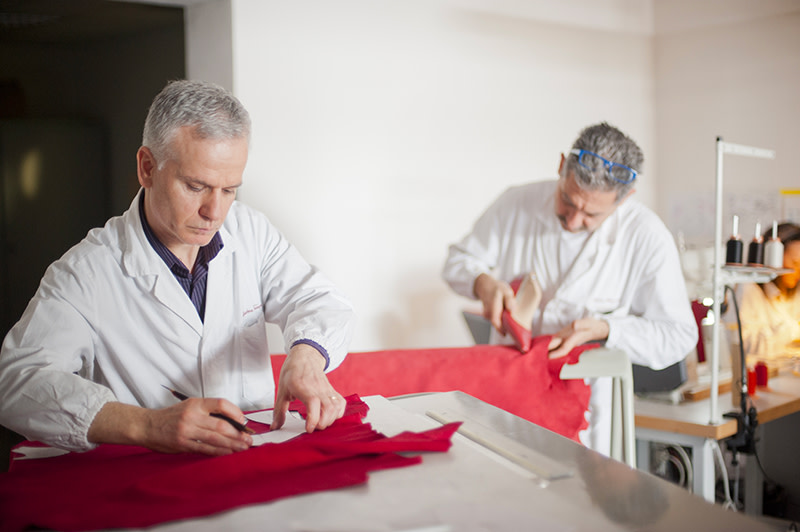Discovering the Florentine manufacture of Salvatore Ferragamo
A workshop that best combines savoir-faire and made in Italy
The core idea of the Salvatore Ferragamo brand is shoemaking and its legacy revolves around the know-how resulting from the art Salvatore Ferragamo applied to the creation of shoes. The Ferragamo family tribe has definitely embraced the legacy of their founder and built upon it with amazing results, to say the least: the company is now a global business quoted on the Stock Exchange. The physical manifestation of Ferragamo’s art and creativity is the factory based in Sesto Fiorentino, just a few kilometers away from Florence. That is the place where the Ferragamo’s Creations (the collection including the brand’s most iconic shoe models) are made, as well as catwalk shoes and the prototypes for the women’s shoe collection produced by select manufacturers only. What you learn at this “university of shoemaking” is not based on books, but on the historical and collective memory of the people who learned from other people who learned from Salvatore Ferragamo but, having recognized evolution as an indisputable fact, they have made progress and have perfected and optimized production techniques and processes over the years.
 Produzione Ferragamo
Produzione FerragamoWe are welcomed inside the highly-protected factory - where you can almost feel the industriousness and creativity flowing through - by James Ferragamo, the Group’s women’s leather product development manager. Surrounded by rolls of leather skins (99% of Italian origin and mostly sourced from the nearby leather tanning district of Santa Croce), patterns and lasts, you realize that skills and experience are so advanced here, it doesn’t even seem real. “A perfectly-made shoe is the result of thousands of different steps - he explains - a “mosaic” formed by a multitude of tiny tesserae”. How many tesserae go into a shoe? “About 200 operations are required, from the cutting of the upper to packaging”, says the great Salvatore’s grandson, who made his first pair of shoes at the age of thirteen (a pair of Varinas for his British grandmother) right here, in this factory, after having completed his studies in the US and worked his way up the company ranks through sheer hard work.
 Produzione Ferragamo
Produzione Ferragamo“The minimum training period for a Ferragamo artisan-worker is four to five years” goes on James, while we go through the various departments: Style, Creative Modelling, Technical Modelling, Cutting, Shoe Construction (where the double lining and upper are stitched together to make a complete front) and Conveyor, where all the shoe components are assembled (Salvatore Ferragamo’s workbench translated into production line) and where the factory’s only hi-tech machinery is found: the so-called Premonta, a state-of-the-artpulling over and toe lasting machine. A pattern maker redraws a sketch by designer Massimiliano Giornetti on the last. “This is the most complex stage of the whole process - explains James - because we have to transform a two-dimensional sketch into a three-dimensional object without significant changes in proportions and without causing disharmonies that may be uncomfortable to the foot”.
 Produzione Ferragamo
Produzione FerragamoThe most important thing about a Ferragamo shoe is that it must feel good as well as look good, that is, it must provide support by distributing body weight evenly on the foot without causing uncomfortable constriction. Therefore, amazing lightness (of leather and lining), flexibility (the shoe components are assembled with as little glue and stitching as possible and each pair of shoes “ages” for four days on the last to mould the heel, which has a flexible organic core, into shape) and perfect fitting (every size comes in a number of shoe widths written in words and Roman numerals, up to 120!). However, Salvatore Ferragamo’s greatest invention, the fruit of sleepless nights spent studying anatomy, was building arch support into his shoes to ensure proper weight distribution. A revolutionary idea that led to the invention of the so-called cambrione (the patent of which he filed in 1931, one of his 400 patents on shoe design!): a thin steel insole which supported the foot arch and which is still one of the key features of a pair of Ferragamo shoes.
Walking through this factory’s workbenches gives you a close-up look at all the details that make the difference. One detail less and the comfort, beauty and perfect fitting of a Ferragamo shoe would never be the same.









